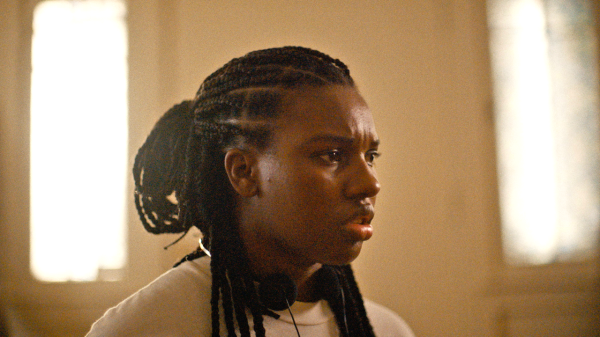
“We all grieve so differently,” the filmmaker Winter Dunn says. “And I think that, as adults, we forget that our children are experiencing their own process of grief that has nothing to do with you and has everything to do with you.”
At 4:03 P.M. on September 13, 1996, the rapper Tupac Shakur died, following six days at the hospital in critical condition after he was shot in Las Vegas at a stoplight, at the age of twenty-five. “Dear Mama . . .,” the latest short film from the director Winter Dunn, takes its title from the lead single from Shakur’s 1995 album “Me Against the World,” written about his mother, the Black Panther Afeni Shakur. Dunn’s film follows a family through the day of Shakur’s death, in a poignant story of public and private grief.
The film centers on Tanisha, a young Black teen-ager living in Los Angeles. Her mother has just died, and Tanisha and her father, Nate, are preparing to move out of their house. She is in the living room, packing the last of her things, when a news broadcast announces that Shakur has died. For Tanisha, already in mourning, the loss is devastating. She and her father are at odds over the move, necessitated by the sudden financial hardship brought on by the loss of her mother, and they each take the news in different ways.
The New Yorker Documentary
View the latest or submit your own film.

Dunn wanted to make a film showing the varieties of grief, and the loneliness of the experience. “We all grieve so differently. And I think that, as adults, we forget that our children are experiencing their own process of grief that has nothing to do with you and has everything to do with you,” Dunn said. In the film’s script, originally written by the screenwriter Charmaine Cleveland as part of Film Independent’s Project Involve program, Nate’s only acknowledgement of Shakur’s death is his resentment at local channels’ coverage as he shoves items into boxes; talking briefly with a member of his church, he refers to the gathering of mourners as “chaos all over a thug.” Tanisha hesitates to take down the photos taped to her bedroom wall above the brown painted wicker headboard; she reclaims her mother’s camera from the box of items to be donated. Throughout the day, a television plays in the background, its pre-digital-era cathode-ray tubes a window to the outside world’s collective grief.
The two come to an impasse when Tanisha wants to attend the vigil that night on Slauson Avenue. The two have been absorbed in familial grief and preparing for their own transition, but she wants to go out into the world beyond the drooping ficus tree in the almost-empty house’s back yard. Nate, in his determination to stay busy and to keep moving, sees this as time away from preparing the house for the landlord’s final house inspection, and believes that it is potentially dangerous for Tanisha to go to Slauson Avenue alone.
Tanisha and Nate spend most of the film grieving quietly, and separately, but their relationship is the film’s emotional core. “I don’t see enough father-daughter dynamics onscreen, specifically in Black families,” Dunn told me. And when Black fathers and daughters are depicted, it’s often overly simplified and sentimental—“a real perfect dad who never wants you to date ever.” Dunn, who is Black, felt it was important to show a more complicated reality. “I just think there’s so much diversity in our family stories and what we navigate as young people and young Black people.” When Nate and Tanisha find a way to connect, it’s a powerful reminder that what goes missing from a life does not have to break what remains.
Sourse: newyorker.com